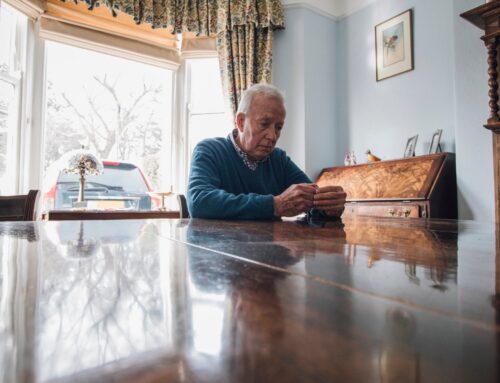Reflections on senior poverty at the Aging in America Conference
The issue of senior poverty was in focus at this year’s Aging in America Conference, and with good reason. Over six million seniors live in poverty in the United States and that number is rapidly increasing as thousands of baby boomers turn 65 every day.
At the kickoff of the conference in early April, Justice in Aging’s Executive Director, Kevin Prindiville took part in the ASA Chairs’ Lecture, “Senior poverty and what we are doing about it.”
Later in the week, Special Counsel Paul Nathanson participated on the panel, “The state of older people: Their economic security, their health.”
Both of the sessions aimed to describe the dire situation older adults face as they age and how particular populations are disproportionally impacted by poverty. For example, the oldest seniors, women, and people of color experience poverty at much higher rates. Additionally, poorer individuals are also in poorer health – a topic that was covered in the general session, “Poverty as a health issue: From awareness to cure,” where Lisa Ryerson, president of the AARP Foundation pronounced that “senior poverty is a problem for all of us that needs a solution from all of us.”
The American Society on Aging said it was cause for celebration to hear that the reauthorization of the Older Americans Act (OAA) was approved by the U.S. House of Representatives during the conference. The OAA helps to fund critical programs for seniors like meals, transportation, caregiver support, and legal services, but the OAA alone is not enough to provide for the needs of seniors now living in poverty.
The conference sessions all recognized that addressing senior poverty requires a multi-faceted approach that considers the intersectionality of age, income, race, gender and sexual orientation. Solutions must include strengthening the social safety net and making improvements to programs like Supplemental Security Income (SSI) to increase income seniors rely on.
New housing initiatives are also needed; there is not sufficient affordable housing for seniors, which often means that seniors are paying too much of their income for housing. More than one in three households with an older adult face a high housing cost burden, meaning that they pay more than one-third of their income on housing.
Solutions must also address the rising cost of health care, and include making investments in the Medicare and Medicaid programs.
Directing Attorney, Jennifer Goldberg, and Senior Staff Attorney, Amber Cutler participated in the conference session, “Dual eligible demonstrations: Lessons learned and planning for the future.” They discussed a new Affordable Care Act pilot program aimed at improving the delivery of care for dual eligibles – those individuals with both Medicare and Medicaid health insurance coverage. These pilots have the potential to improve health outcomes and reduce health care spending by coordinating care for seniors and linking seniors with resources to help them to continue living in the community.





